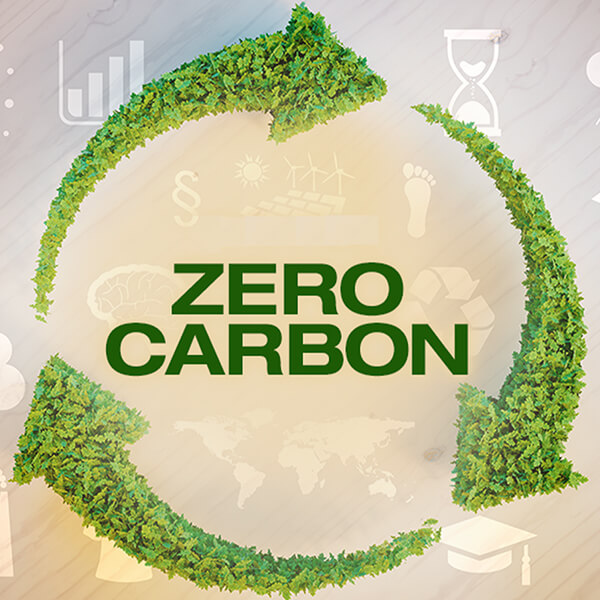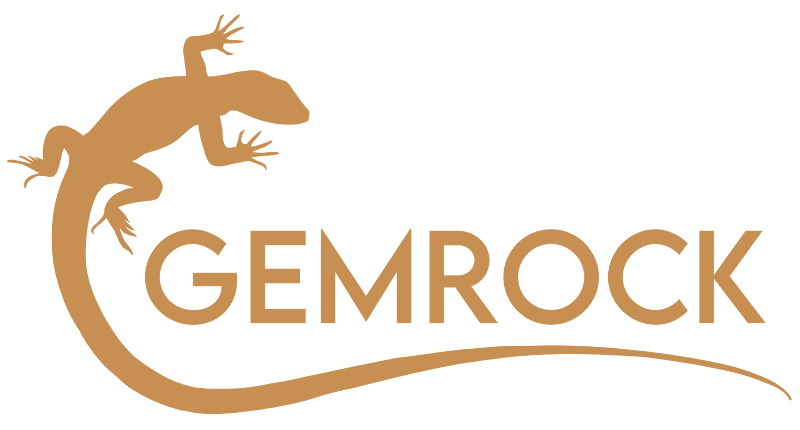Sustainability Report 2021
We are changing the tide!
The 2021 Sustainability Report is an intent to create transparency about the social and environmental impacts caused by our business and the crystal industry in general. The results of this first analysis will serve as a baseline measure to gradually and constantly improve the social and environmental record of our company on one hand and to provide a positive example for other companies to follow on the other hand.
Introduction:
The 2021 Sustainability Report is our first intent to analyze the social and environmental impact of our company. The goal of this document is not to show off and portrait ourselves as the most environmentally friendly crystal company in the world. The goal of this document is to set the baseline from which we can start improving in order to become the most environmentally friendly crystal company in the world. However, we are aware of the fact that by starting this process we are already claiming a leadership position in the global crystal industry and we are proud to do so.
This first report will not show a perfect company. However it will raise awareness about impacts caused by our industry most people are not even aware of. We ourselves were not aware about some of those issues. This documents shows what we could achieve already, even if the action was not based on a systematic analysis. It also shows what we are still struggling with.
By initiating a systematical approach and keep improving our record year by year we will be able to demonstrate what´s possible. We hope that this will motivate other companies to follow our example and we hope this report will help the global public to gain awareness about the social and environmental problems related to the crystal industry and how to solve it.
Let me finish this short introduction with an invitation to everybody, especially other professionals from the crystal industry, as well as environmental engineers and other related professionals to start a conversation with us. Any idea, advice or positive feedback that helps us improving, is very welcome at any time.
What sustainability is and what you can do about it?
When talking about “sustainability” we are not referring to an economist´s perspective of making a business being financially sustainable or long lasting. We are referring to the 1987 definition put forward by Mrs. Brundtland for the United Nations as being ecologically sustainable, meaning: “meeting the needs of the present without compromising the ability of future generations to meet their own needs.”
The key to reaching this environmental sustainability, which is not compromising the capacity of future generations, is:
- to reduce the use of non-renewable resources to the absolute minimum possible,
- to reduce the use of renewable resources towards a level at which these resources actually can renew themselves at the same rate, with which we are extracting them, and last but not least:
- reducing environmental contamination to the absolute minimum possible because an increased contamination will necessarily reduce the capacity of renewable resources to do just that: renew themselves.
If we are looking at where we are today, 35 years after the United Nations demanded a change of our society and a development of the economy towards sustainability, then we cannot help but getting scared:
Current scientific data shows, that there are planetary boundaries. If we overstep such boundaries irreversable change will be initiated that puts the survival of the human species together with all other species at a very high risk. We know now, without leaving room for any doubt, that our species has already overstepped 3 planetary boundaries to the point of irreversable change: We already have lost too much biodiversity (species of plants and animals) to get back to a healthy system. We have already overstepped the use of nitrogen and phosphorus in our agricultural system leading to unpredictable and irreversable change in our ecosystems.
Even more worrisome is, that there are two more factors where we are about to overstep those planetary boundaries: Our use of land ecosystems (or better said our destruction of them) has come to a level that is going to become irreversably unsustainable within years from now. And climate change is progressing so fast that if we do not manage to reduce the global use of fossil fuel in 50% within the next 8 years till 2030, we will overstep this planetary boundary too, getting into unknown irreversible high risk territory where we just can´t foresee yet the catastrophic change that this will mean for the entire world.
As if it was not enough yet, there are three areas where we have no scientific method yet to even evaluate if we already overstepped the boundaries because the effects are so hard to quantify. Those three are the level of functional diversity our damaged ecosystems still retain, the level and impact of air contamination as well as the future impact of novel entities (meaning artificial contaminants introduced into our nature). Not knowing where we stand with those three problems is not an argument for doing nothing. In the contrary, it should ring an alarm bell and call us to immediate precautionary action.
In fact, the only two areas where our world is still in the safe zone are the use of water and stratospheric ozone depletion with the later one being the only environmental topic humanity ever had a success in reducing its impact.
In summary: the time for governments, for companies of any sector and for every human being to keep putting a blind eye to this and act as if nothing was wrong is OVER. Everybody, we as a company, every worker in our company, every one of our clients – we all together, should act, if we truly love our children.
We must understand that all our care and effort to bring up well our children will be useless if they do inherit from us a shattered world.
We are aware of the fact, that this still is not an easy message to convey, that change will be hard and that there are so many excuses not to do anything. But simply put: the time for excuses is over too.
So let´s start doing something.
By now it also has become clear that the change towards an environmentally sustainable world will not be possible if we neglect the human element. A sustainable future is not only built on a healthy environment, but also on a fair, just and equal global society. That´s why we also must admit finally (every one of us) that our current system of consumption is based on a deeply unjust, unfair and unequal global economy.
We all need to accept the fact that we cannot have ever “cheaper” products while pretending to be in favor of an ethical economy. In fact we need to finally understand that the words “cheap” and “ethical” never ever will go together. It is an undeniable fact that any move towards producing “cheap” products (or offer “competitive prices” to mention a synonym of cheap) will always result in an unethical, exploitive and unfair production chain.
The key demand for our society is to change our consumption pattern away from ever cheaper, discardable, low quality products towards fewer products of higher quality and longevity. This means we have to turn around our industry 180 degrees and march production-wise into the opposite direction. For us as a company this is only possible if our costumers support this move. No business can survive such a change if it is not supported and rewarded by customers who actually buy their high quality and more expensive products.
We have decided to take the leap of faith into the world´s consumers, to make this change and to hope that you, dear reader, will support us in doing so by becoming our faithful customer.
The destiny of this crystal company lies in your hand.
Our companies´ sustainability criteria:
We are a crystal company. We cannot help with agricultural problems. The use of phosphate or nitrate is not a part of our work. As a crystal company we need to stick to the areas that we can actually do something about. So of course the first step of this report is to define which are those areas, that we have to work on. In order to do that we have selected our goals from the 9 topics related to planetary boundaries and from the 17 United Nations goals for a sustainable world. Even though the latter goals are made mainly for governments, we are trying to find out how we as a company can help. Our current selection is as follows:
- Protect Species Diversity and protect the integrity of land habitats.
- Reduce freshwater use
- Reduce environmental contamination
- Reduce climate change
- Energy
- Responsible Production and Consumption.
- Abide by the law
- No corruption
- No child labor
- No conflict minerals
- Provide sustainable quality jobs.
- Ensure healthy lifes and promote the well-being for all at all ages.
- Promoting equality in general and especially gender equality.
- Revitalize the global partnership for sustainable development.
1.) Protect species diversity and protect the integrity of land habitats:
Mining is an extraction industry for non-renewable resources and therefore crystal mining is inherently unsustainable, because mining exploits a resource till it´s gone and even though our planet is in a constant process of creating crystals, we know that this occurs in geological timescales of millions of years, being therefore beyond the timescale human beings can plan with.
Additionally to being non-renewable the extraction of underground resources necessarily impacts the biosphere, meaning the living habitat on the land surface and all too often mining leads to the complete destruction of such local habitats. Therefore a responsible crystal business must make a decision about what is possible and what should not be done.
Luckily for our business most mining operations are located on the westerns slopes of the Andes and in the coastal desert of Peru, being one of the driest deserts on earth with very little plant or animal life to be harmed and with nearly no underground water bodies to be contaminated. Additionally gemstone and crystal mining is not using any chemicals, with dynamite, being used for underground mining, being the only chemical used. Environmental impacts therefore are from a start relatively low to very low for Peruvian crystal mining operations.
What we do:
- We are not mining, taking part in or buy resources from any mining operation that is located in the Peruvian cloud forest or rainforest, being those extremely important ecosystems of high biodiversity (plant and animal species). Having already overstepped the planetary boundaries for species diversity any plant and animal as well as natural habitats must be protected. Therefore:
- We are not buying gold from rainforest mining for our jewelry
- We are not sourcing amazonite and we are not having amazonite products in our stock (amazonite mines are located in the rainforest).
- Our own crystal mining operations in the foothills of Lima department cannot really be called “mining” as we are not using any dynamite at all. All crystals are found in smallest reserves (geode-like bubbles) at the surface, being distributed over a huge desert terrain. So we are actually more nomadic collectors than miners. We are digging into the surface with hand tools for maximum half a meter. Our basecamp is a temporary tented camp and we have a Puma strawling in between the tents at night. Needless to say it is a very exciting experience to hear and feel one of these last big predatory cats being so close. We are making sure that all camping trash is collected and transported out of the area.
- Last but not least we are now starting a rainforest re-forestation project that will be financed with funds raised from crystal sales in order to recover some of the mega diverse habitat that has been lost and will provide new habitat to hundreds of plant and animals species. Given the fact that we as humans have already overstepped the planetary boundary of biodiversity by already having initiated a species mass extinctions at global scale, recovering habitat will surely be one of the most important actions in order to support planetary sustainability. Please read more about how you can support this project by buying a carbon-positive crystal.
2.) Reduce freshwater use:
The use of water in lapidary production is a huge environmental component. All cutting, shaping and polishing tools are water cooled. Additionally, the cleaning of the machines and the entire facility from stone dust, as well as cleaning the stones themselves, all this consumes a huge amount of water.
What we do:
-
- In 2021 we changed our water system, by building a simple but effective water recycling system for our lapidary machines. By doing so we were able to reduce our water consumption for the last three months of 2021 in 75% in comparison to the months before. The full effect of such huge water savings will be reflected in a further reduced carbon footprint by the end of 2022.
3.) Reduce environmental contamination:
Environmental contamination is everywhere and happens at any stage of the production process in any industry. Making the greatest effort to reduce it, is a constant process on all levels of a company.
What we do:
- We are collecting all trash and waste being generated during our temporary crystal mining operations in the Peruvian desert foothills and transporting it out of the area in order to deposit it in designated garbage landfills near the capital.
- We are not burying trash in the natural environment
- Burning household trash is a common activity of Peruvian people seen on a daily basis all over the country. However burning plastic trash at low temperature creates the most poisoness chemical of all: dioxin. We are therefore refraining from any trash burning during our mining operations and we are educating our staff about why this should not be done, creating this way environmental consciousness. We are motivating our staff to educate others.
- In our lapidary plant we are collecting glass, metal scrap, plastics and paper in separated waste bins and sell those materials to recycling companies. The small profits being generated by this will be invested in a rainforest reforestation project. Sadly in Peru we do not have composting initiatives so we still cannot find a way to recycle organic matter, but we are constantly evaluating ways to incorporate this element in the future.
- Crystals have to be cleaned from oxide in acid baths. In Peru we do not have plants or facilities that would accept chemical trash. The common way to deal with old acids in all other lapidary workshops in Peru is to simply flush the acids down the drain. As these acids have not been treated before, discarding them will harm water life when reaching the ocean as they cannot be treated in the basic Peruvian wastewater treatment facilities. We are, to the best of our knowledge, the only lapidary workshop in Peru that bothers about making the effort to actually treat and neutralize our old acids before discarding them. We are therefore making sure that those neutralized acids will have the lowest harmful effects possible.
- Lapidary work leaves you with lots of powder and mud from the cutting and polishing machines. This mud is not contaminated as it is generated mechanically and the machines are cooled with water only. Nevertheless we are collecting and drying this mud and then discard it on designated construction waste landfills.
- Reusing is better than recycling, as recycling is an additional process of manufacturing while reusing is not. We are reusing materials whenever possible. When moving our workshop in 2020 we had to retrieve dozens of kilos of wiring from the existing infrastructure. We did manually retrieve all the copper wiring from those cables and use this copper now for producing jewelry with our stones. We also reused 90% of the wood that was retrieved from the existing infrastructure when adapting it to our use.
- In our wholesale branch we are reusing packaging materials from other companies (drums, cartoon boxes, paper for cushioning). It does not look pretty but reduces the environmental impact of such packages to zero.
- In our retail branch we are using recycled packaging.
Our challenge: Bubble Wrap
Crystals are products that tend to break easily. Sadly in Peru we have no access to alternative packaging materials that have the same protective success than bubble wrap. All these great new alternative packaging materials made from recycled paper, mushrooms, seaweed etc. etc. are not available in Peru. If we wanted to import such materials, this would greatly increase shipping costs, which is something the regular consumer simply would not be willing to accept. So here in Peru it comes down to newspaper or bubble wrap. But newspaper just does not have the same cushioning power as bubble wrap and using it would greatly increase breakage during transport as well as it would increase the weight of the package and therefore again shipping cost.
What you can do to help us
4.) Reduce climate change:
By now there is no room left for doubt about the fact that human induced climate change is going to be the most dramatic natural force changing the face of our planet and gravely affecting not only the human species existence but the entire planets biodiversity. Science leaves it crystal clear to us: If the global human society on all its levels does not reduce the use of fossil fuels in 50% over the course of the next 8 years we will pass the planetary climate change boundary and march into unknown high risk terrain that will harshly impact the quality of life of all future generations, meaning: our children, theirs and so forth.
Put in front of such a daring challenge there is not a single day left to loose for all of us to make a change. Here is what we do and how you can help:

Mining, transport, lapidary work and final shipping to your home, all these steps carry environmental impacts caused by the use of water, energy and other resources. Gemrock Peru is the first crystal company measuring its carbon footprint: Our carbon footprint in 2021 was 49.53 t of CO2 emissions.
Based on this analysis we now can initiate specific measures in order to reduce this footprint a little more each year. However the only way to reach zero carbon emissions is to plant trees in other places, which extract CO2 from the atmosphere and this way do eliminate the emissions caused by us.
Therefore we are now offering you the unique opportunity to buy a carbon-neutral crystal.
Measure Your Carbon Footprint
We are also offering you, to calculate your companies´ footprint using our calculation method. This can be done from a distance based on the information you will provide us with in order to complete such a calculation.
If you want to become a carbon neutral company too:
5.) Energy:
Reducing energy use is still a mayor challenge for us. When moving into our new facilities we replaced all old light bulbs with LED lights, reducing this way the electricity for lighting in 90 %. However all our machines are running on electricity, of course. The only way we can see so far to reduce energy consumption is to use solar panels. However importing those panels is still much too expensive to make economic sense when competing with our cheap national energy grit, that it just is not affordable for us to do that.
The good news is that Peru´s energy mix consists of 60% hydroelectricity, 5 % alternative energies and only 35 % of our national energy is produced with fossil energy which makes Peru{ s energy production to be one of the cleanest ones globally.
Nevertheless we are in a constant search for ideas how to reduce our energy consumption and will apply those ideas whenever possible.
So far the best way to act is to plant trees and compensate the CO2 emissions. You can partner with us to become a carbon neutral crystal business:
6.) Responsible Production:
6.1.) Abide by the law:
Illegal mining must be defined as a type of mining that is against the law, which includes a number of possible cases like mining in protected areas, mining without permission, working in mines or on mining concessions of another company without their permission, extraction of protected resources, etc.
Gemrock Peru does not engage in illegal mining and does not cooperate with illegal miners. Here is what we do to make sure that our company is not related to illegal mining:
Gold: We are not sourcing gold or silver for our jewelry from illegal rainforest mining operations. An easy way to make sure that our gold and silver is legal is to buy it only from sources that provide an official invoice and to refrain from any cash payments. If there is a bank involved and a paper trail (official documentation) does exist, then one can be sure that the provider is legal.
Rough Rock: We are not sourcing rough rock or crystals from providers that may be engaged in illegal mining. Again, avoiding cash payments and buying only if a legal invoice is provided is a way to make sure we deal with a legal miner.
Pyrite: 95% of Peruvian Pyrite comes from Huanzala mine in Ancash. And basically 100% of this material has been stolen at night from inside the nickel mine. In January 2022 the mine management denounced a nationwide network of organized crime in connection with drug trafficking to be managing the pyrite trade and asked the Peruvian state prosecutor to investigate and act against this illegal network. The document given to the Peruvian state prosecutors mentions Gemrock Peru as the only Peruvian crystal exporter having an exclusive buyer contract for pyrite with the mine and not belonging to this network.
Informal mining is a type of mining where the mining concession holder does hold the required documents and permits for the mining, but all his mining activities are not reported to the authorities, meaning the entire mining operation sells the extracted minerals against cash payment (no paper trail, no tax payments) and miners are working without formal labor contracts. They don´t receive labor benefits like vacations, health insurance, accident insurance, life insurance or retirement benefits. If something happens to them, they are on their own. It is common place for Peruvian crystal exporters to source their materials from such informal mining operations.
We are refusing to accept rocks or crystals from providers that want cash payments. All our crystals are sourced from miners that provide us with formal invoices. All payments are made via bank wire. Our expenditure for sourcing therefore is visible to governmental authorities which are now able to identify the source for our material and check on the provider any time they wish. Our procedures do force our providers to have their permits and paperwork in order and become formal and legal miners.
6.2.) No corruption
Gemrock Peru is not engaging neither tolerating corruptive acts along its entire production chain.
6.3.) Child labor
Luckily Peru has enacted a number of laws strictly prohibiting child labor in mining operations and has implemented those laws too, so that at least for all legal and formal mining operations one can state that child labor is not an issue anymore. None of our providers is known for or has been seen employing children. If that would ever occur we would immediately sever our contacts with such a provider.
We know of the occasional existence of child labor in family-owned artisan lapidary workshops in Peru and we do completely reject such actions and do not engage in any cooperation with those workshops.
6.4.) No mining in conflict areas
Luckily mining of gemstones and crystals in Peru is not located in conflict areas with exemption of the amazonite mines, which are located in the VRAEM, the valley of the three rivers Apurimac, Ene and Mantaro, a “lawless” region overrun by “narco-terrorists”, where about 70 percent of Peru’s cocaine is produced. Today, an estimated 300 ex-terrorist fighters remain in the region protecting and controlling drug production. Because of this we are not sourcing amazonite.
7.) Provide sustainable quality jobs
All carved and polished mineral and gemstone products have been produced in so called lapidary workshops. We do not know of any legal and formal lapidary workshop in Peru other than our own one. In general terms, lapidary workshops in Peru are not registered companies. They are not even registered as businesses with the municipality or the tax officials and it is common place that such workshops do pay bribes to municipality workers in order to remain undetected. Their entire business is cash based in order to avoid tax payments. The lapidary workers are hired without written contracts and do not receive any labor benefits like vacations, health benefits or retirement payments etc.
Therefore nearly all carved gemstone products from any other Peruvian exporter have been produced working thru such illegal workshops.
To the best of our knowledge Gemrock Peru is the only Peruvian crystal and gemstone exporter that has his own lapidary workshop. We are a registered company and member of the chamber of commerce of Lima.
What we do:
- Gemrock Peru does not work with any other lapidary workshop.
- We are hiring all our workers under formal contracts and they do receive all legally required health and labor benefits.
- Our labor and safety conditions do comply with all relevant Peruvian laws and our company has been visited and checked by the corresponding Peruvian governmental entities the last time in March 2022 and was approved without any changes or improvements to be found necessary.
8.) Ensure healthy lifes and promote the well-being for all at all ages.
None of the other existing lapidary workshops in Peru does have or does implement any of the following measures.
What we do:
- All our workers have health insurance and accident insurance.
- All our workers are equipped with protective clothing according to their workplace, like goggles, ear plugs, boots and other protective clothing.
- Our staff does receive special training units to avoid accidents.
- Some of our employees are single mothers. Whenever they have problems to find daycare for their children they are allowed to bring them to work where the children can play in the administrative areas and are being taken care of by our administrative staff.
- We are providing our staff with fully equipped rest rooms, a fully equipped kitchen and a spacious room for having their meals.
9.) Promoting equality in general and especially gender equality.
What we do:
- We have internal guidelines that prohibit any form of discrimination at the work place.
- Our workers come from a number of nationalities.
- We are working gender equal with our ratio men/women being nearly 50/50 in all areas of our company
- All kind of sexual orientations are being welcome and hired.
Gemrock Peru: Social and Environmental Responsability
Why choose Gemrock?
All our workers are hired under formal working contracts and provided with all legally required health, labour and retirement benefits.
We are going to great length to find the right process for each type of stone in order to achieve the best possible polish.
During our lapidary production we have a rigurous review process in place that filters out any product that shows the tyniest scratches.
We strive for perfect shapes in all our products, even if this means an extreemly high effort in carving.
Even if handmade piece by piece, we do offer standartized sizes that do not vary more than 2 to 3 mm. This improves the pricing process of our clients.
All our workers are hired under formal working contracts and provided with all legally required health, labour and retirement benefits.
We are going to great length to find the right process for each type of stone in order to achieve the best possible polish.
During our lapidary production we have a rigurous review process in place that filters out any product that shows the tyniest scratches.
We strive for perfect shapes in all our products, even if this means an extreemly high effort in carving.
Even if handmade piece by piece, we do offer standartized sizes that do not vary more than 2 to 3 mm. This improves the pricing process of our clients.
We are constantly improving our production process in order to achieve shorter production times while maintaining quality. Also we are trying to save water and energy.
Free Gemrock Learning Resources
Free Gemrock Learning Resources
Connect wherever you want and can
Connect wherever you want and can
Get in Touch
+51 994104206
gemrockinternational@gmail.com











